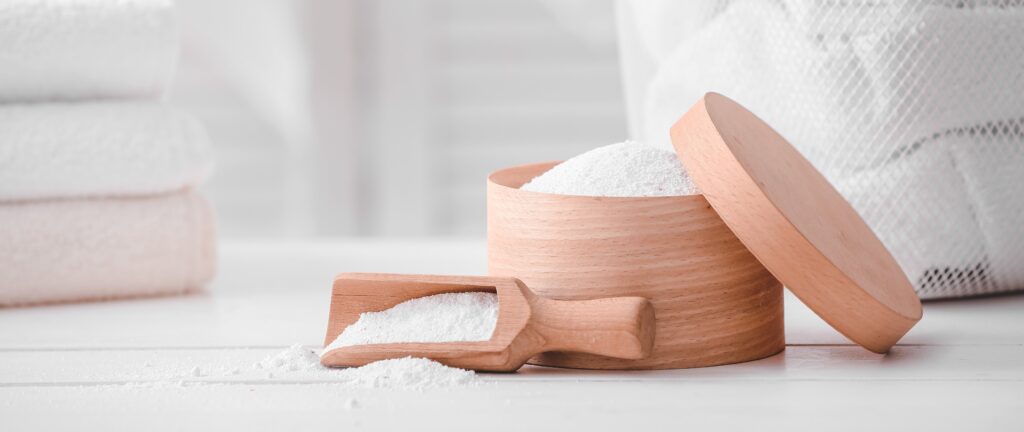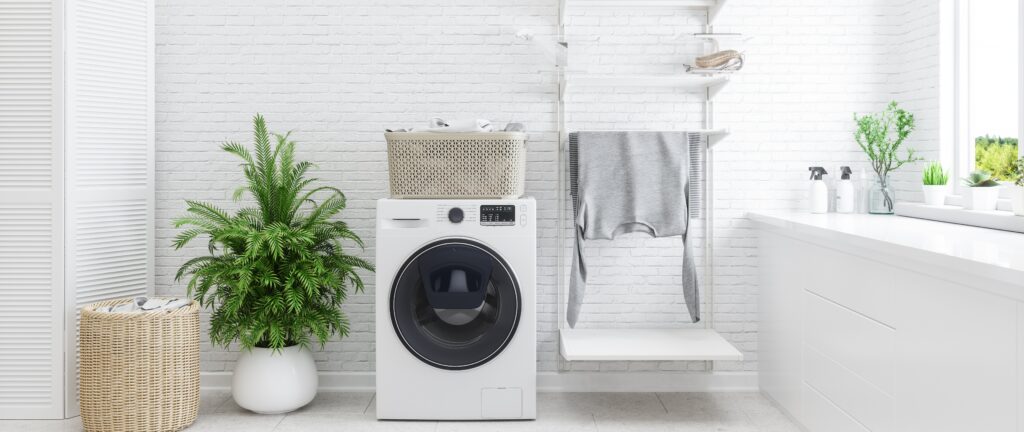Keep your sheets in top shape with proper wash and care
Time magazine recently weighed in on the proper way to wash your sheets, and we were intrigued. The article opens by detailing someone’s daily (yes, you read that correctly) sheet washing routine. Apparently this dynamo wakes up, strips her bed, puts the sheets in the washer while she has her coffee, then tosses them in the dryer while she works out. Then she makes her bed before heading out for her day.
While this woman’s daily routine is admirable, and it must be nice to snuggle into a fresh bed every night, we wondered if it was necessary. In fact, there could be some drawbacks to such a regimen. So let’s get sudsy learning about washing sheets.

Go Au Naturel
Firstly, we are superfans of natural fiber sheets. We sell many versions of organic cotton sheets, from crisp percales to smooth sateens to casually crinkly percale to cozy flannels. We also love linen sheets, and maybe you’re someone who has splashed out on one of those fancy silk pillowcases.
Sleeping on natural fiber sheets is the sustainable choice, especially when they are sourced, processed, and made in eco-friendly ways. Unlike sheets made with synthetic fabrics, they won’t release microplastics into our waterways and they biodegrade quickly back into the soil when they’ve covered their last bed. For all these reasons and more, we sell and love Coyuchi’s sheets.
In order to maintain your investment’s softness and durability, it really pays to get familiar with that particular fabric’s laundering needs. Your choice of detergent can make a huge difference, so let’s get into that.

Laundry Detergent—Choose Wisely
Here are some common laundry detergent ingredients to avoid:
- Enzymes. For protein-based fibers like wool and silk, you want to steer clear of laundry detergent with any enzymes. They literally “eat” the fibers, resulting in holes and reduced longevity. We recommend Eucalan for its superior gentleness. Enzymes can also be an issue for cotton, linen, and cellulosic fabrics made out of bamboo and other plants—look out for “cellulase.” While many companies add this for smoothing and stain-fighting reasons, over time, it degrades the fibers. Other ones to look out for: lipase, amylase, protease.
- Optical Brightening Agents (OBAs). Ever wondered how detergent companies achieve those “brightening and whitening” claims? OBAs are chemicals added to detergent and they’re meant to build up over time to absorb UV light and bounce back more whitish-bluish light. Unfortunately, this build up can prevent stains from releasing and most are toxic to both people and planet. Ingredients to look out for:
- Disodium distyrylbiphenyl disulfonate (DDD)
- Fluorescent brightener
- Fluorescent brightener #71
- Fluorescent brightener 28 sodium salt
- Tinopal CBS-X
- Skin Irritants. If you have sensitive skin or suspect your laundry detergent may be contributing to skin issues, be sure to avoid these common allergens and irritants:
- Preservatives
- Enzymes
- Parabens
- Colors and dyes
- Moisturizers
- Fabric softeners
- Thickeners and solvents
- Emulsifiers
In general, we recommend a plant-based laundry detergent that avoids all the above. Be sure to check the ingredient list, formulas for sensitive skin or babies are often gentler and more environmentally sound.
There’s a lot to be said for going the old-fashioned route. You can make your own laundry detergent with washing soda, borax, and some Castile soap. And vinegar is an amazing way to deodorize, soften, and remove stains. Grandma would be proud!

The Washing Method
Once you’ve got your laundry detergent dialed in, what’s the process? And how often do we need to wash them?
Frequency. In general, once a week is plenty. You may want to consider more frequent washing if or when:
- It’s summer or you sleep hot and sweaty.
- Pets sleep with you.
- You have sensitive skin.
- You’ve got allergies.
Research has shown that pillowcases get the dirtiest, so consider buying an extra set and switching those out more often. Daily washing like our case study above will definitely wear sheets out fast, so if you go that route, be sure to stock up and rotate. Not to mention…given that a load of laundry uses somewhere between 13-40 gallons of water per load, it’s certainly more water-wise to not wash everyday.
Laundering Process. While our grandmothers washed everything in hot water, that may not be the right way to go about it—be sure to read the laundering instructions for your sheets. For example, Coyuchi recommends washing their organic sheets in cold water and tumble drying on low. Be sure not to overload the washer. For an extra planetary and sanitary boost, consider air drying them in the sun. Grandma was definitely right about that one! If you do use the dryer, throw some wool dryer balls in there instead of toxic and fabric-damaging fabric softeners.
Prevention. You can keep your sheets fresher longer with a few pro tips:
- Shower before bed to wash off body oils and skin cells that dust mites love to feed on.
- Wrap your hair if you use products so they don’t transfer to your facial skin.
- Wear pajamas to bed and you can wash the pajamas instead of your sheets.

Sleep Happily Ever After
Washing sheets isn’t rocket science, but it works best with a bit of know-how. While daily washing isn’t needed or recommended, developing an eco-friendly weekly routine is key to maintaining a bedroom environment conducive to a restful night’s sleep.
Thanks so much for tuning in! Check out these related Counting Sheep blogs for more:
- How to Wash Your Wool Items
- Learning About Water Conservation and Textiles
- Overnight Attire: Pajamas vs. Sleeping Naked
Be sure to follow us on Instagram for more bed-spiration and sign up for our Ewe’s Letter in the form below. We hope to see you here again soon and we wish you sweet dreams!

